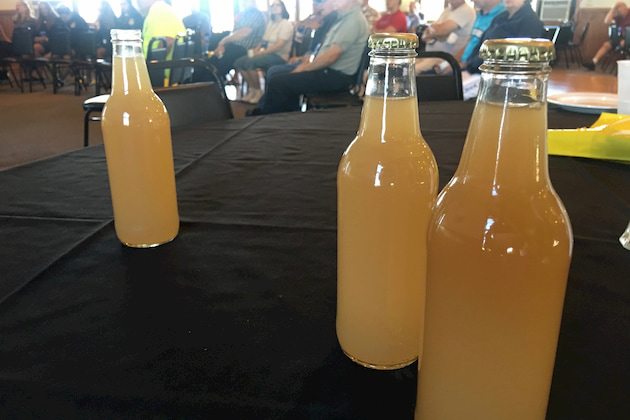Cornell Corner
Maple beverages offer another revenue stream
Cornell study beverage profits
By DEBORAH JEANNE SERGEANT | MAY 8, 2019
SYRACUSE, N.Y.—Keith Otto is taking value-added maple in directions few sugarmakers have taken it.
Things like maple beer, wine, spirits, cider and kombucha.
"There's great potential for adding value to your existing business," Otto said during a presenation at the Mid-Winter Classic Maple Show in Syracuse last January.
Otto is a researcher with the Cornell Maple Program and the Uihlein Maple Research Forest in Lake Placid, N.Y.
There's untapped potential--literally--in New York's forests, he said.
"If you're looking to market syrup and make extra money, forging a relationship with a local brewer, distiller, or wine maker will help you market your syrup," Otto said.
He offered several examples of the booming alcohol industry in New York.
More than 1,000 producers in the Empire State are making wine, beer, cider, spirits and kombucha, a fermented tea and fruit beverage originating in Asia.
That includes more than 400 breweries of all sizes, 400 wineries, 150 distilleries making craft spirits and 65 cider producers, he said.
"All of these categories continue to grow," Otto said.
Newcomer kombucha has just started to take off.
"It's technically not an alcoholic product because of its low percentage of alcohol," Otto said.
Based upon a survey he conducted, experts in these industries don't know a lot about maple. That's why he feels it's incumbent on sugarmakers to educate them on maple or learn to make their own beverages that use maple for flavoring, sweetening and/or fermenting.
The good news is that among those who have used maple in their beverages, all used it from a local source and 90 percent see a use for maple year-round--not like pumpkin spice-flavored items in autumn, he said.
"It surprised me that they didn't see maple as a seasonal release ingredient," Otto said.
Those not using maple don't because of busyness, consumer trends and expense.
Otto doesn't think expense should be an impediment, considering "the billions spent in New York on alcohol. But that goes back to education."
Their uses included barrel-aging syrup and then aging whiskey in same barrels and use of sap instead of water.
"Uses seem to file around flavoring and sweetening rather than as a fermentable," Otto said. "Different grades allow for a variety of production uses."
Using maple as a fermenting agent, like honey, works well.
"Yeast doesn't care; it's a sugar," Otto said.
He wants more beverage producers and maple producers to collaborate and share information to their mutual benefit.
"If you're interested in having these relationships, most of them are amicable," Otto said.
Sugarmakers should consider how far the beverage producer is from the farm, who will deliver the maple, and how they will use it.
"It's important to know you can jump right into these industries, but you shouldn't," Otto said. "If you're dedicated to the maple industry, you should have the same drive to do it right."
Producers who want to make their own products should research the various licenses required in their state for the different types of products and for different production levels, he said.
In New York for example, a farm brewery license costs $884; for a three-year craft license $1,852; and for a microbrewery, $884.
Farm winery licenses range from $210 for a micro winery to 525 for a standard farm winery. Would-be distillers pay $937 and cider makers $625. The specifics of kombucha are yet unclear.
Maple producers may also need considerable education in how to make beverages and learn how to use maple as an ingredient.
Otto has a background working at vineyards and a brewery. He has worked with Cornell's maple program five years and instructs on brewing at Paul Smith's College.


































